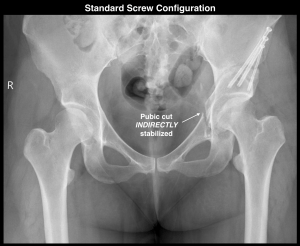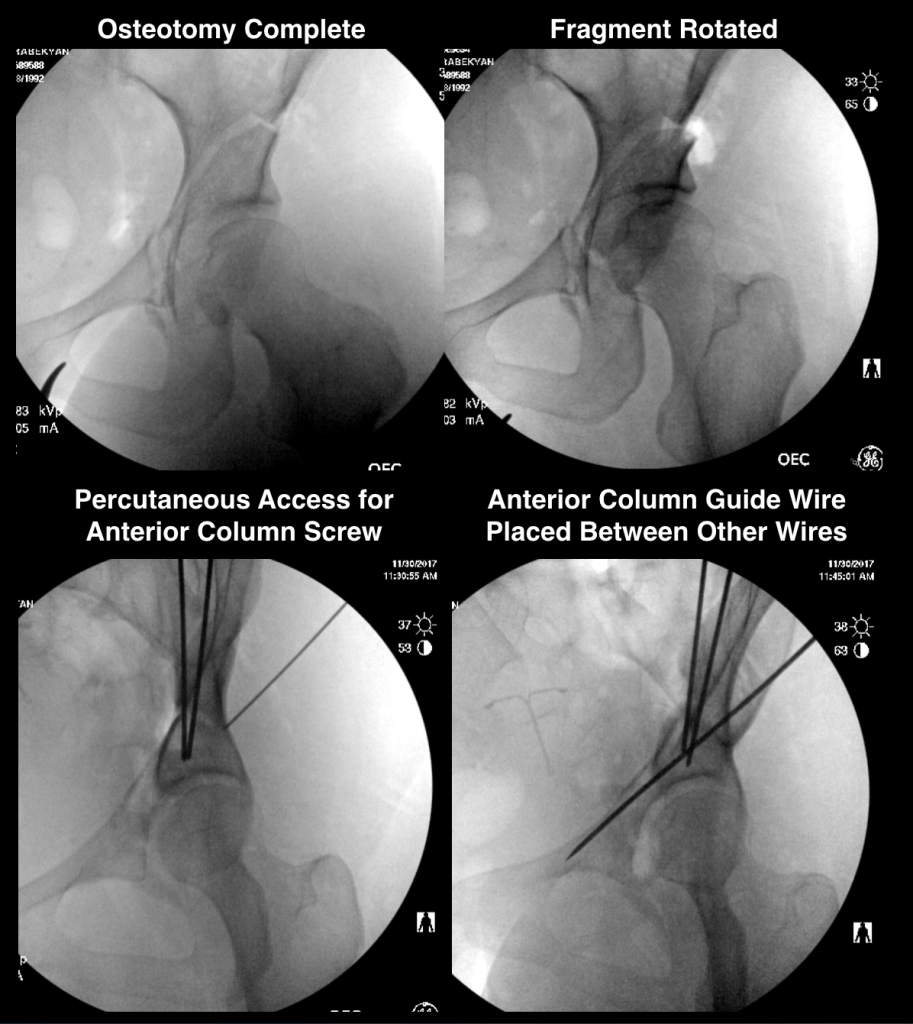Periacetabular osteotomy (PAO) is typically carried out by using 2 – 4 screws placed through the iliac crest and aimed at the central acetabular fragment to stabilize the newly aligned hip joint (Figure 1). This method indirectly stabilizes the pubic cut and is usually adequate to provide stability and promote bony healing. In some cases, the pubic cut fails to heal with bone and instead heals with fibrous tissue due to excessive loads placed in this region, typically in athletes or high demand patients. When this happens, it can be a source of pain and potentially require repeat surgery to bone graft the region.
An alternate screw configuration may be used to directly stabilize the pubic cut by placing what is known as an anterior column screw (Figure 2). This technique is technically more difficult as it is performed under x-ray guidance rather than direct visualization, and the bony corridor for safe screw placement is narrow – demanding meticulous attention to detail (Figures 3 and 4).
Although there are currently no head-to-head comparison studies of the two methods of fixation for PAO surgery, it is my preference to use the screw configuration that will provide the most stable construct, especially in higher demand patients. At Southern California Hip Institute, we are continually challenging the status quo and investigating new and cutting edge techniques to improve outcomes following PAO surgery.
Dr. Tigran Garabekyan is a board certified orthopedic surgeon specializing in hip preservation. To learn more about Southern California Hip Institute or to schedule a consultation, click here to contact us. Serving patients in Encino, Sherman Oaks, Van Nuys, North Hollywood, Burbank, Glendale, West Hollywood, Century City, Beverly Hills, Santa Monica, Los Angeles, and other neighboring cities in the greater Los Angeles area.









